Alfred Travel travel companion pick up your luggage at your hotel or Airbnb and deliver it to the train stations and airports in Paris
Please introduce yourself and your startup Alfred to our readers!
My name is Sophie Goujet, I am the co-founder of Alfred Travel. I have worked for ten years in the Travel Retail industry. I am a keen traveler by nature, and I created Alfred almost a year ago with two co-founders: Charlotte Sevin and Amee Cox.
Alfred is a tailor-made luggage pick-up and drop-off service in Paris. We collect the luggage of travelers from Paris airports or train stations, and we deliver them the same day at the time and location of their choice (hotels / Airbnb, etc). We also do the process the other way around: from Paris city center to the airports or train station.
In a way, Alfred is the Uber of luggage, allowing everyone who visits Paris to enjoy the city free of their bags. Especially on their first and last day of holiday.
How did you get the idea of Alfred?
I was a frequent traveler prior to 2020. I was taking on average two flights per week, whether it was for personal or professional reasons. Naturally, I know what it means to lug my luggage everywhere! Usually, I had to leave my luggage in a locker or at the hotel reception. But it was not often practical, as I always had to come back to pick-it up at some point. And this is how the idea developed.
Why did you decide to start with Alfred?
We had discussions with many people: CTO’s, entrepreneurs, hotel directors, to understand the ins and outs of creating a company, developing a service that doesn’t exist yet, grasping the customer needs, understanding the market, etc.
And we also did extensive market research, which helped us understand what travelers require or want when they travel. We already sensed it, but we realized that people from other continents or countries are sensitive to complete different triggers when it comes to their travel. It is very much based on their culture, their age, or their sensitivity to technology for example. Based on all our findings, we built the business plan and went for it!
What is the vision behind Alfred?
The vision is to help travelers by providing an affordable, safe, and user-friendly service. It is as simple as that! Enjoy the moment and make the most of your trip. That’s what really drives us. And there is nothing better than seeing a customer at the airport, at the very end of their trip saying: “wow, thank you; I had the time to do so many things today!”
How difficult was the start and which challenges you had to overcome?
We created Alfred in the middle of COVID-19. We thought it was an opportunity because most of the businesses re-focus on their main product / service when a crisis arises. And we believed there was room for newcomers like us. What we didn’t see, is how long Covid would last and how it would impact the overall tourist industry.
Hence the beginnings were slow, and we had to wait for travelers to come back to France. But when the situation got better, we had some great conversations with hotel managers, tour guides, and several partners. This was back in December 2021. And we had the vision to start our model on a B2B2C basis.
Unfortunately, most of our potential partners suffered from a tough cash flow + recruitment issues (many hotels have difficulties recruiting since COVID-19). So, they were not ready to integrate a new partner.
And then the 5th wave of COVID-19 arrived (Jan – March 2022). It put most of our conversations in the bin and we had to start from scratch again. This is where we decided to change for a B2C model. A month later the first orders arrived and the number of requests per month keep growing now! It allowed us to prepare for the high season, to fine-tune our concept. And to approach partners again with both a successful concept and customers reviews in hand.
Who is your target audience?
Basically, anyone who comes to Paris! We have customers coming from all over the world: Scotland, Singapore, Israel, Thailand, Australia, Germany, Switzerland, South Africa – you name it! I don’t like using the word tourist as I believe you can visit a city as a local and still live somewhere else. But most of our customers come to Paris for personal reasons.
We are planning to target business travelers a bit later down the line.
What is the USP of your startup?
Alfred is a safe yet fun travel companion that helps people explore the city like locals. We liberate customers from their bags and allow them to enjoy and live every minute of their trip “in the moment”.
Can you describe your typical workday?
The first thing I do in the morning is to check if we have had any orders coming through during the night. A lot of our customers live in a different time zone, which means we receive payments early in the morning frequently.
I take note of all confirmed orders and book the slots for them according to their travel dates. Following this, I check the emails we received overnight. A lot of customers also contact us via the traditional contact form on our website. We do our very best to answer them within a 24-hour timeframe, which means providing a response as soon as we can.
Around lunchtime, I usually go to our dispatch area to check the orders of the day. At this time, 95 percent of the luggage have been picked-up and we can then organize the team around the deliveries in the afternoon.
We double / triple check every element, then we do a briefing with the team and load the cars with the luggage. In the afternoon, I typically spend some time on business development and customer satisfaction: I answer the customer requests, and try to organize all my calls during this timeframe.
Later in the day, we plan together the upcoming deliveries and do a round-up of the day to discuss what went well and what could be improved. Customer satisfaction is the main driver of our entire business, so we do review every single review / comment we receive and discuss them as a team.
Where do you see yourself and your startup Alfred in five years?
In five years we aim to be present in different cities across Europe and be a reliable travel companion for many people!
What 3 tips would you give to founders?
My first tip would be to find a work-life balance from the start. You may not be able to take four weeks of holiday during the year, but it’s important to find time for yourself. Being an entrepreneur is a long journey and if you throw yourself at it for 200 percent for too long, you will end up living only through your company: its successes and its failures, which is not what life is about.
My second tip would be to test your pricing from the start to understand what your clients are ready to pay for what you offer, while understanding if your business is sustainable with the selling price you are proposing.
And thirdly, don’t be afraid to try new things to sell your product/service. You may be shy in front of people, undersell your product. But if you don’t sell it, you will never grow. Sometimes that will require you to put your ego on the side and be persistent while keeping all conversations open.
Picture from left to right: Charlotte Kevin, Sophie Goujet, Amee Cox – Credits: Alfred
More information you will find here
Thank you Sophie Goujet for the Interview
Statements of the author and the interviewee do not necessarily represent the editors and the publisher opinion again.









